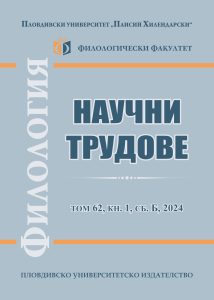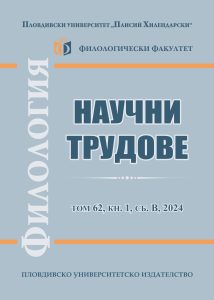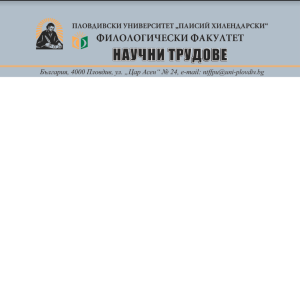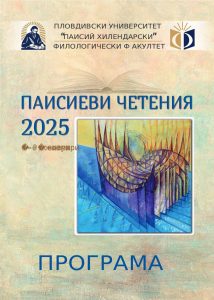VOL. 53, BOOK 1, PART С, 2015, pp. 353 – 371 Full text (Bg)
Author: Margreta Grigorova
Affiliation: St. Cyril and St. Methodius University of Veliko Turnovo
Abstract
The text interprets Roman Polanski’s film „The Pianist“ as a „shared auto-biography“ (of Spillmann, Chopin, Hosenfeld and Polanski himself) with four synchronized layers of meaning, respectively. The layer which foregrounds the lietmotif and bears the symbolical implications of the film is associated with Chopin. It is connected with the power of music to rescue, to bring confession and salvation to the human soul. The layer which serves as a direct basis for the script is the memoirs of the pianist Spillman. The next layer is the diary of the German officer Hosenfeld who rescues Spillmann at the end of the war. The most discreet, subtle and encoded autobiographical layer, however, belongs to Polanski himself. Spillmann’s and Polanski’s memories of the Second World War are as personal and individual, as they are common and shared, for there are many coincidences between them. These common memories give Polanski the opportunity, by relating the story of Spillman, to confess himself, and to inter-twine his personal episodes into the film. It is also important to note that „The Pianist“ was based on the second edition of Spillmann’s memoires (1999), which was initiated by his son Andrzej Spillmann first in Germany. Fragments of Hos-enfeld’s diary can be found in this edition. The book ends with an epilogue by the German poet Wolf Birman, telling us about the biography and life of the of-ficer with the meaningful title „Bridge between Wladislaw Spillmann and Wilm Hosenfeld, consisting of 33 parts“. The first edition of Spillmann’s memoires was in 1946 and was censored to a crippled level. There was a film based on it (“Warsawian Robinson“), which is in conformity with the ideological impera-tives in communist Poland of that time.
Key words: „The Pianist“, Roman Polanski, Wladislaw Spillmann, Holocoust, autobiography






